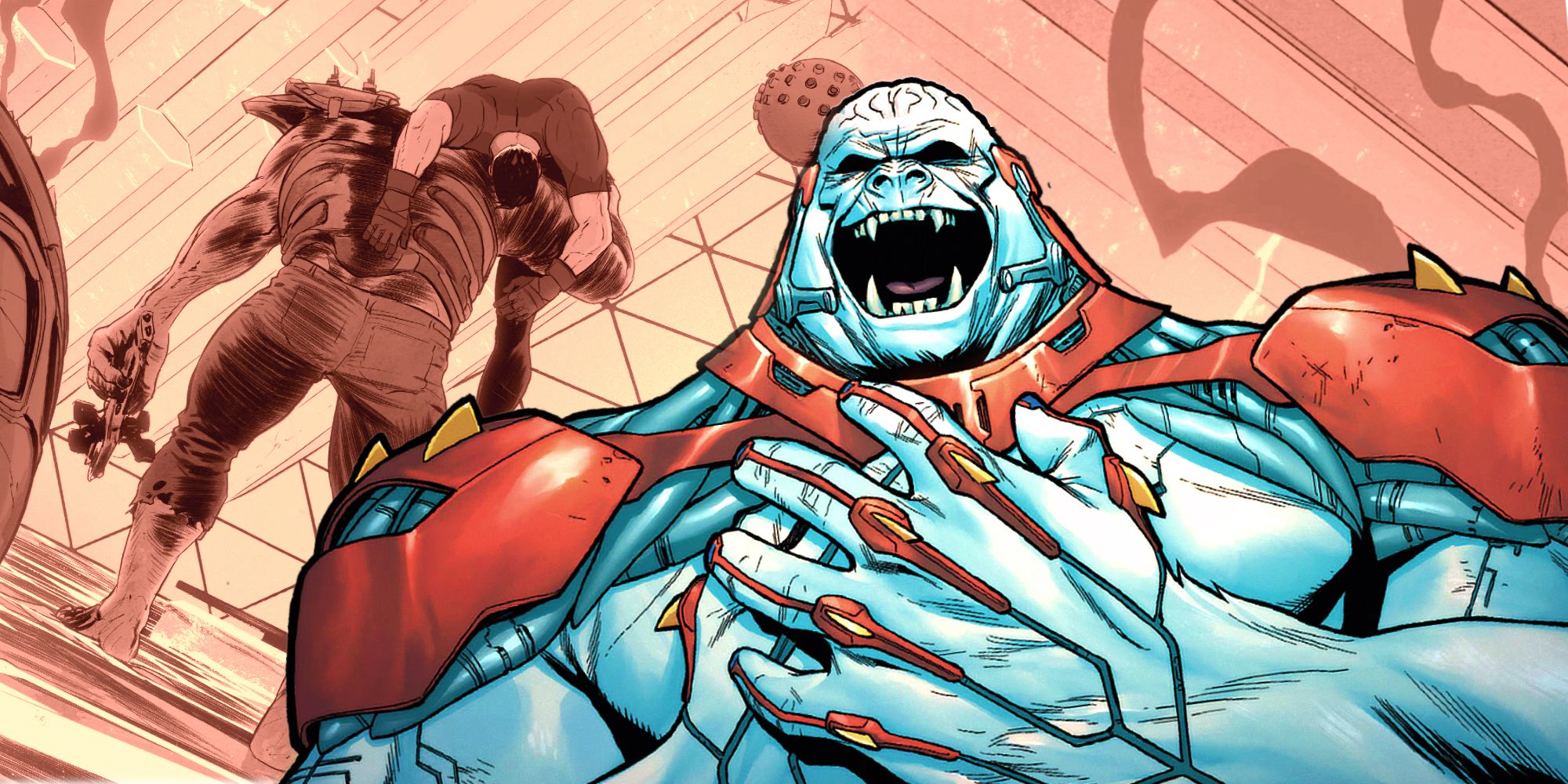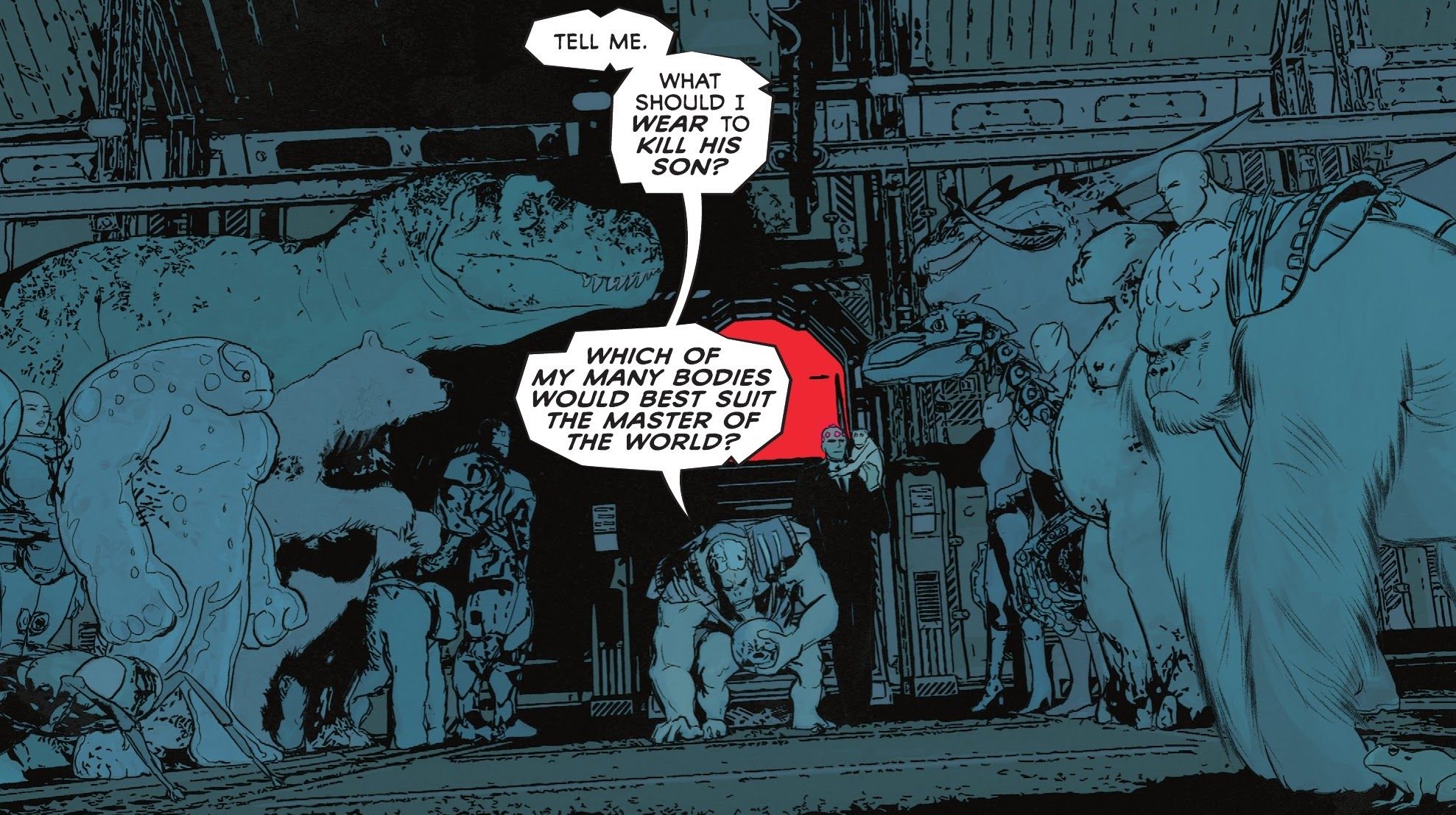Warning: contains spoilers for Superman and the Authority #4!
The Ultra-Humanite might not be as well known as the likes of Lex Luthor or the Joker, but he's actually the first recurring supervillain published by DC Comics. In Superman and the Authority, Grant Morrison and Mikel Janín have given the body-hopping mad scientist a massive power upgrade - and one that is sure to provide new challenges to Superman and his family.
Debuting in 1939's Action Comics #13 (from Jerry Siegel and Joe Shuster), the Ultra-Humanite was designed to be Superman's opposite: where Clark possesses superhuman strength and invulnerability, the Ultra-Humanite is a criminal mastermind paralyzed from the waist down, intent on using his genius to take over the world. Unlike the other criminals Superman fought in his early days, however, the Ultra-Humanite would return to battle him over multiple issues, most notably transferring his brain into the body of Hollywood star Delores Winters, and later a mutant gorilla. In Superman and the Authority #3, Ultra-Humanite (in the body of Solomon Grundy) knocks out the power-dampened Superman in Fort Superman, declaring that he will "remake the world" with the Man of Tomorrow's Kryptonian powers.
In the latest issue, Clark awakens in the Bottle City of Kandor, which usually has an artificial environment that renders native Kryptonians powerless. However, Clark reveals that the artificial environment has been turned offline, and proceeds to battle the Ultra-Humanite before Lois Lane subdues the villain with a White Kryptonite gun (which is effective against Grundy's plant-based body). Removing Grundy's head to study Ultra-Humanite's brain, they discover that it has been upgraded with advanced technologies, bearing the trademark insignia of the intergalactic world-collector, Brainiac. While the Ultra-Humanite was previously only able to transfer his brain into one body at a time, this new Brainiac-powered upgrade allows the villain to clone their consciousness across multiple bodies at the same time. As a result, they no longer see themselves as a singular individual, but the harbinger of humanity's next stage of evolution.
With an army of drones piloted by copies of his brain, the Ultra-Humanite attacks the G7 Summit on Climate Change in Dubai as part of Brainiac's plan to save the Earth's ecosystem from destruction by humanity. He is joined by other villains and former heroes, including Eclipso, Fleur de Lis and Iron Cross. Although they are stopped by the new Authority team - consisting of Apollo, Midnighter, Enchantress, Manchester Black, Steel, Lightray and OMAC - the villain's new consciousness-cloning technology means that they might never truly die so long as one body remains. Back in Brainiac's ship, currently suspended in the Earth's orbit, the Ultra-Humanite enters a hanger full of different bodies at his disposal, which includes a dinosaur, multiple alien creatures, a Chemo-like android, and a frog. As Clark reveals that he intends to leave the Earth to save other planets, Ultra-Humanite believes that the Man of Tomorrow has ceded the Earth's future to their control - and sets out to kill his son, Jon Kent!
With the series' conclusion marking their last contracted work with DC, Morrison has brought back Superman's original arch-nemesis - not only giving them new powers but greater emotional depth and complexity. As Jon Kent takes up his father's mantle, could the Ultra-Humanite finally regain the status befitting DC Comics' first true supervillain?


